Funding the arts?
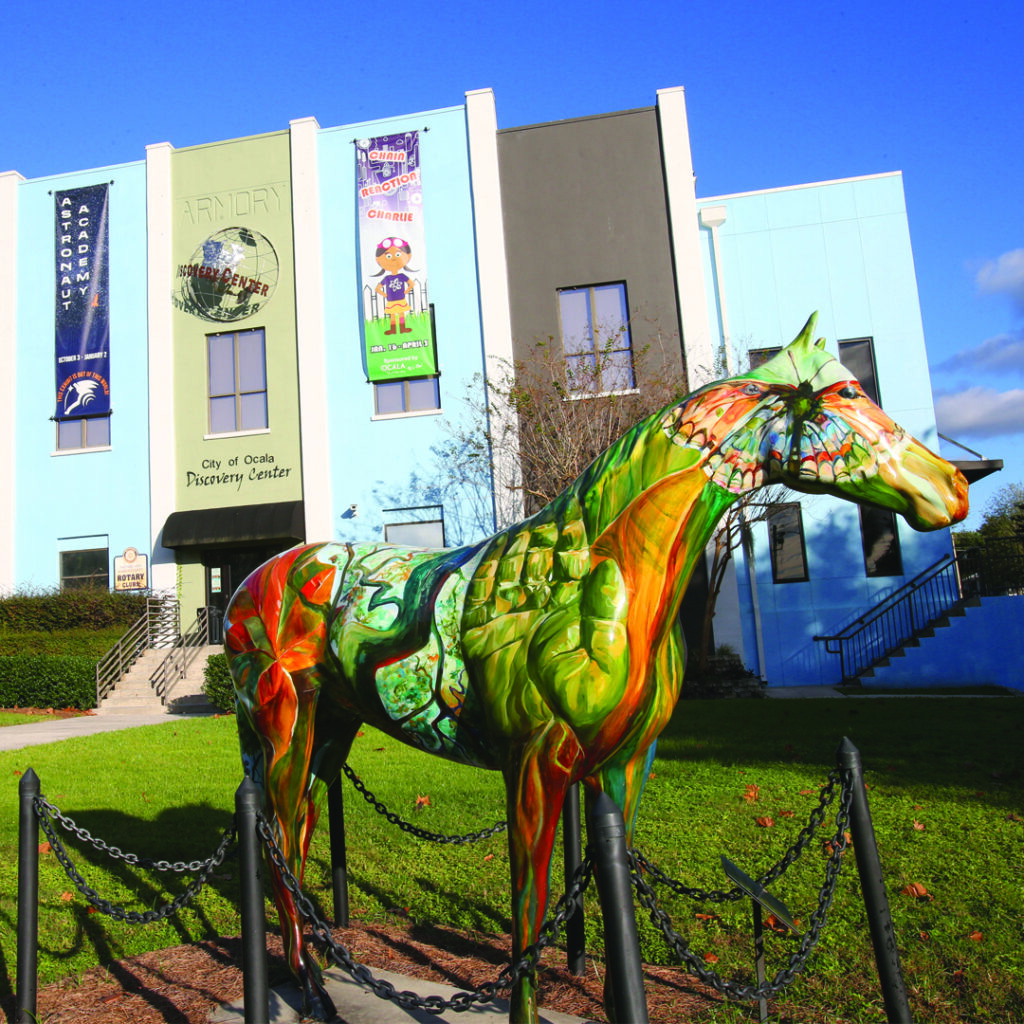
The Discovery Center is shown in Ocala, Fla. on Monday, Nov. 30, 2020. [Bruce Ackerman/Ocala Gazette] 2020.
Arts implementation plan approval initiates next steps
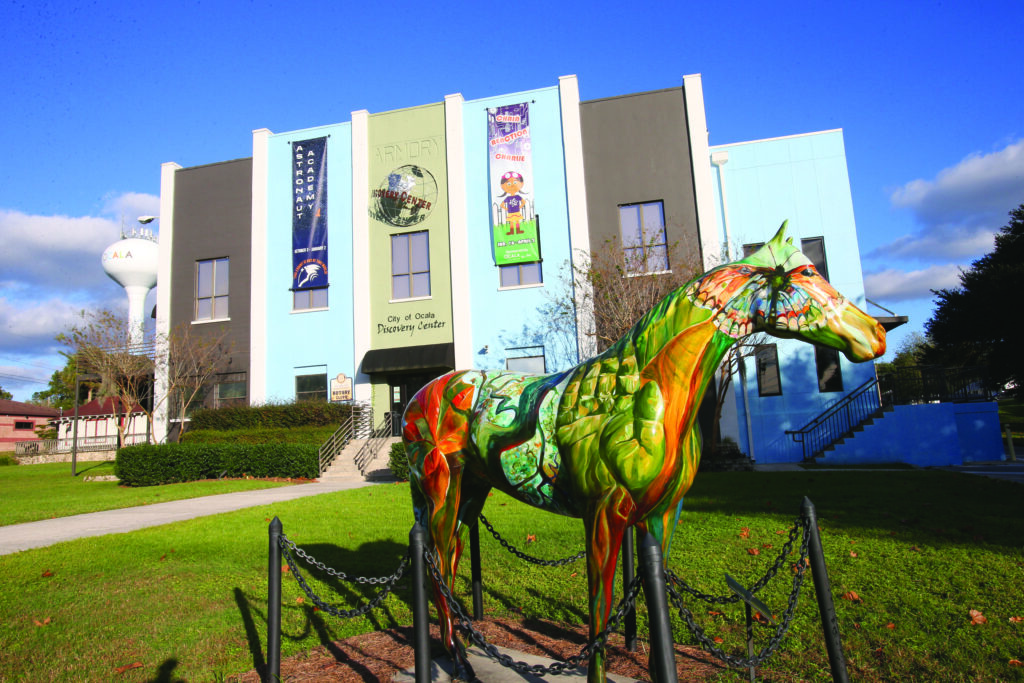
It is no secret that there is ever-growing recognition of the importance of the arts sector in Ocala and Marion County.
“The impact of a vibrant arts environment is found in our local economy, quality of life and the development of workforce skills (through arts education and experiences, skills are developed in our young citizens that are valued in the workplace),” said Jaye Baillie, executive director of the Marion Cultural Alliance.
On Nov. 3, without discussion, the Ocala City Council took another step in its commitment to the 10-year Community Cultural Arts Master Plan, which was adopted in 2019, by unanimously voting to approve the Cultural Arts Implementation Plan.
The implementation plan provides a timeline for the master plan’s recommendations and assigns roles requiring the collaboration of several different organizations, ranging from the City’s Cultural Arts and Sciences, Growth Management and Recreation & Parks departments, to several nonprofit arts organizations, the Ocala/Marion County Chamber and Economic Partnership (CEP), Marion County Tourism Development Council (TDC), the Transportation Planning Organization (TPO) and the Community Foundation Ocala/Marion County. Even some of the larger equine industry organizations were tapped to collaborate.
The main strategies under the plan are threefold:
Improve the long-term sustainability of arts and culture in Ocala by addressing the limited funding capacity of donors and lack of public funding sources.
Reposition the city from largest cultural arts programmer to policy maker and technical resource to businesses and arts organizations so they can increase their programming capacity.
Create and support signature places and programs that celebrate Ocala’s arts and culture, such as the Reilly Arts Center, Marion Theatre, Fort King National Historic Landmark and the Discovery Center.
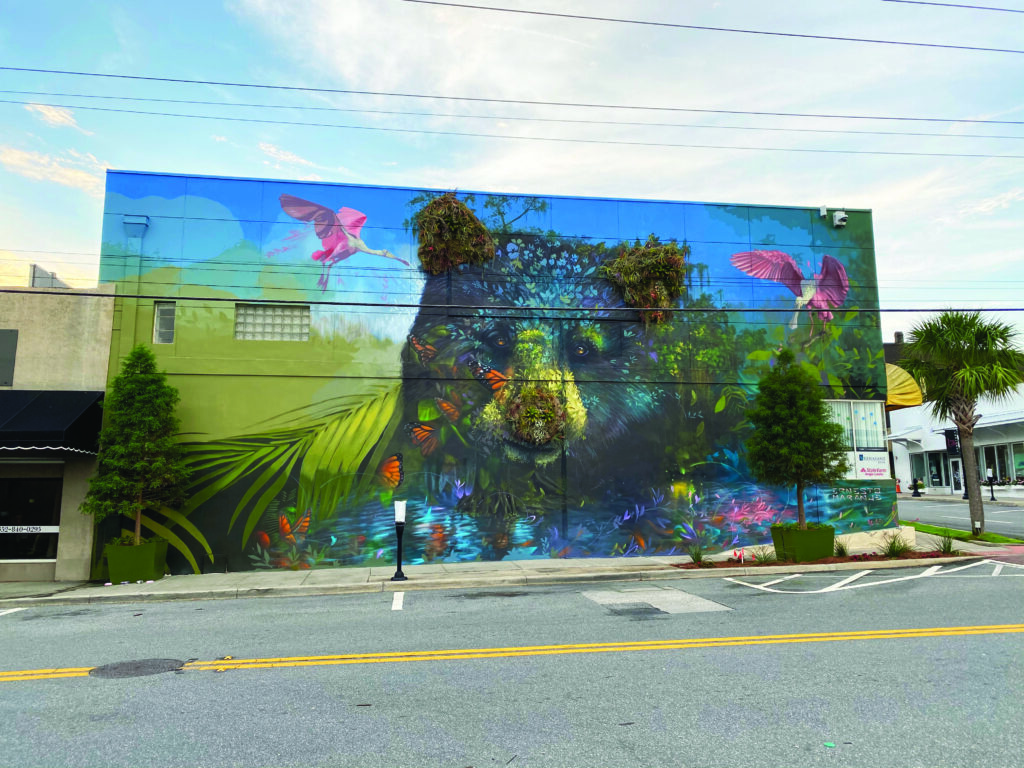
Reflections Through Flora. Photo courtesy of City of Ocala.
“Our largest hurdle currently is funding and the impacts of COVID-19 on both our partner organizations and the services that we provide. The community interest has not swayed in growing arts in our community, it has only grown. Unfortunately, to continue that trajectory, it requires funding and the ability to provide services both through our partners and the city,” explained Laura Walker, Cultural Arts and Sciences Division Head for the City of Ocala.
The implementation plan also narrows down four funding priorities. The first is aimed at building capacity of cultural arts organizations through supportive services rendered by the Marion Cultural Alliance (MCA), a nonprofit started in 2001 following its success in raising $1.5 million through the initial Horse Fever public art project.
The alliance, which contributed $25,000 to the consultant who drafted the 10-year Community Cultural Arts Plan, is noted as being a significant partner in implementing it. The plan requires MCA to expand its capacity significantly for the purpose of playing a support role to other arts organizations, such as connecting those organizations to donors, providing marketing support and spearheading the search for a dedicated public arts funding source, to name a few.
MCA has estimated it will cost at least $200,000 in additional payroll and operating costs each year to deliver their role under the plan as it is realized in the coming years.
“MCA spent six months interviewing a broad group of stakeholders and partners representing thousands of constituents to better understand how our community views and values the arts,” Baillie said.
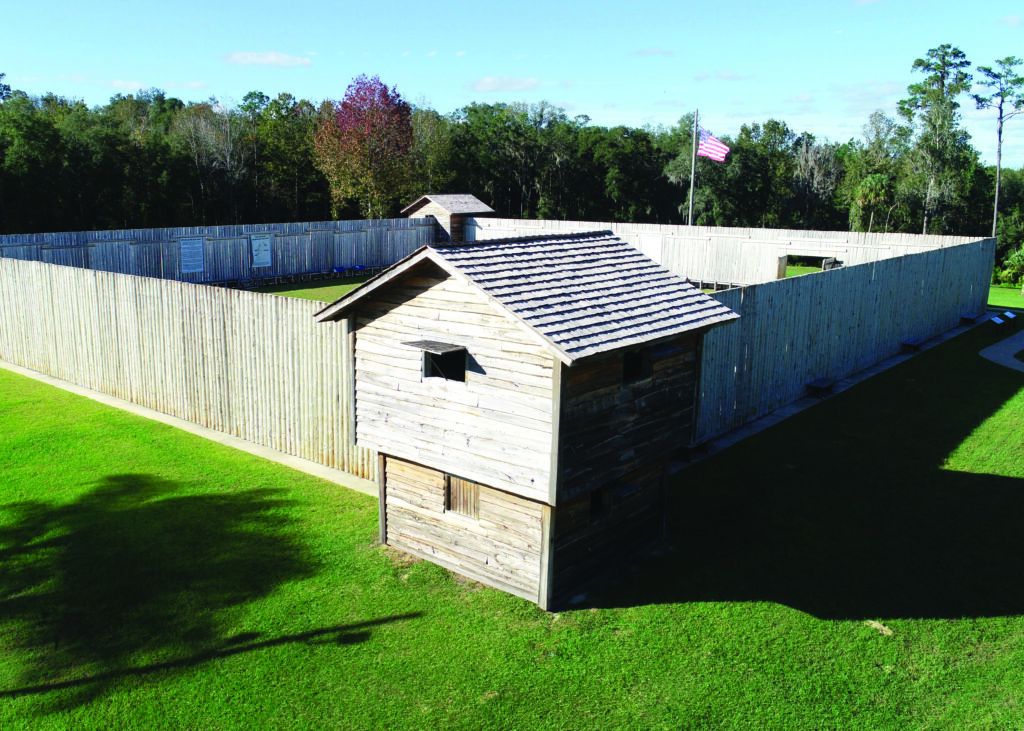
The reconstructed fort is shown at the Fort King National Historic Landmark. [Bruce Ackerman/Ocala Gazette]
During those discussions there was general consensus that “a dedicated funding source needs to be secured” and “a robust and well-resourced plan to market Ocala/Marion County’s arts assets needs to be developed, and technical assistance made available to help arts organizations.”
Baillie added that, as a result of these efforts, “MCA adopted a 2021-2023 strategic plan, along with making revisions of the organization’s mission and vision statements, and established clear objectives, defined timelines, numerical targets and measurable metrics to determine organizational success.”
The second funding priority of the implementation plan is to increase capacity of cultural arts organizations with grants to support their growth.
Baillie explained that there are only four local annual grants earmarked specifically for the arts. Through the MCA’s 20-year-old Cultural Grants program, arts organizations may apply for funding up to $5,000. The application process opens in April each year, with awards announced at the Applaud the Arts event. To date, MCA has provided $365,000 in direct support. The Four Friends Grant Fund provides grants up to $500 for artists to attend workshops, purchase equipment or complete a project. The Korzenny Grant Fund for Arts Educators invites K-12 art teachers to apply for grants up to $1,000 for equipment, training or projects.
Baillie, who also serves on the Ocala Municipal Arts Commission (OMAC), identified one last grant program funded through sales of the arts Florida license plate program, available for arts organizations to apply for funding, with grants average $500.
In addition, the MCA is encouraged under the implementation plan to grow its endowment, now just under $700,000, for the purpose of increasing the amount it can grant to local arts.
Baillie indicated that MCA’s recently adopted strategic plan made goals of increasing the Cultural Grant Awards from $25,000 to $30,000 in 2021, to $40,000 in 2022 and to $50,000 by 2023.
In an effort to establish “a dedicated funding stream for the arts” the plan tasks MCA and the CEP with exploring whether or not a fee or tax on new commercial development or advancing a voter approved special ad valorem tax could possibly generate revenue for this purpose. Once the organizations have ascertained whether or not there is public support for these options, they are to bring their recommendations to the city’s advisory council, the OMAC, for feedback and recommendations before they are passed to City Council for consideration.
The TDC may potentially be another source of funding under this plan since the Marion County Board of County Commissioner’s 5-year strategic plan (2019-2023) for tourism included the arts as one of the tourism products it would spend the bed tax promoting. In the past, the TDC has recommended using bed tax funds to support other tourism drivers, such as the Fort King historical site and, more recently, the Florida Aquatics Swimming & Training (FAST) facility, currently under construction.
The Community Foundation Ocala/Marion County also plays a role identifying potential arts funding under the implementation plan, not just for nonprofit arts organizations but also the City of Ocala under their agreement for grant writing services that was just renewed for its second year.
“Whether that is working with local arts nonprofits to help guide them in building capacity or by exploring new funding opportunities, we are ready to assist the city and its vision for the arts community,” said Lauren DeIorio, the foundation’s executive director.
OMAC is charged with providing a significant amount of oversight in implementing the plan. OMAC is comprised of 11 individuals who represent the fields of fine arts and performing arts, nonprofit and arts administration, and local business leaders. According to the city’s website, appointments to this commission are made by City Council on “the basis of experience and interest in the cultural arts at the sole discretion of City Council.”
The commission is chaired by Pamela Calero Wardell, executive director of the Reilly Arts Center and the historic Marion Theatre, who explained OMAC’s role “as a sounding board for city staff and to make recommendations to the Ocala City Council on policy. Our commission is excited to see this plan evolve and is working hard to be a source of support and advocacy for our city staff that’s working hard to continue moving this plan forward.”
Once the “dedicated funding streams” for the arts are identified, a percentage of those funds will be dedicated to grant funding to arts organizations.
The implementation plan is unclear on who would ultimately be responsible for administering the grants. The initial suggestions under the 10-year plan were to utilize MCA’s art grant process as the “umbrella” arts organization to administer grants to the arts organizations but, under the implementation plan, the CEP, MCA, CEP, TDC and OMAC are to explore which entity would be appropriate for administrating grants and agree on priorities and policies to govern the same.
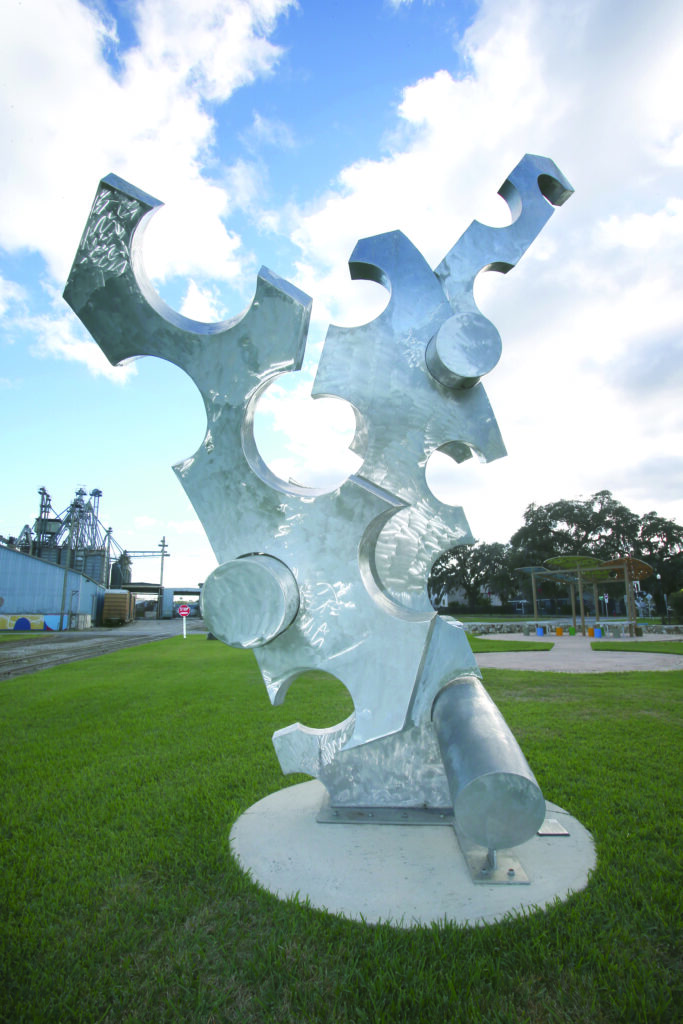
Navigator, an aluminum statue by Mike Hansel, is shown at the Tuscawilla Art Park. [Bruce Ackerman/Ocala Gazette]
Dedicated marketing efforts became the third funding priority under the implementation plan and the initial focus identified seems to be connecting with the equine industry tourist and closing the gap between art offerings and equine facilities. Under the plan, the TDC, MCA, CEP, the City’s Growth Management or Recreation & Parks teams, and Ocala Main Street, a nonprofit focused primarily on downtown, are to explore what type of programming would appeal to the equestrian visitor, appropriate timing for such activations, and other practical considerations. This is the second area of the plan where the county’s tourism department is mentioned as playing a part.
The fourth funding priority under the plan is public art. Walker explained that, traditionally, funding sources for public art have depended on the project, some through City Capital Improvement Project funding through the General Fund, project cost savings, private donors, sponsors and grants. But she expressed hopes the plan will successfully find “an ongoing revenue stream that would be consistently available” and suggested some of those options secured in other communities for the same purpose be explored, such as setting aside money from the “bed tax or implementing a developer fee’s (percent for arts), etc.”
A funding plan for more public art creates a need for the city to have policy in place that guides placement, inventory management and maintenance of public art throughout the city. The Ocala City Council has delegated the task of creating this policy to city staff, with review by OMAC.
The implementation plan identifies multiple “collective partnership” opportunities with various nonprofit entities where the city expresses a willingness to lend city staff and expertise for the purpose of helping nonprofit cultural arts organizers increase programing so the city can reduce the impact on its resources.
“This will allow us to provide services in a catalytic way to both our partner organizations and our community,” Walker said. “This will lay a foundation for the partner organizations to be successful long-term and grow their programming as well.”
The city also hopes to develop a more functional nonprofit foundation to sustain the Discovery Center, which would coordinate private donor giving campaigns in support of carrying operating costs and offsetting substantial exhibit expenses.
Walker estimated the approximate cost of running the Discovery Center in 2019, after crediting admissions, sponsorships and donations, was $42,000 and was approximately $47,000 in 2018. She indicated that, currently, the Discovery Center Foundation is on “an annual allocation path of raising $15,000 a year through Rotary Duck Derby and previously from the Cattle Drive and Cowboy Round Up.”
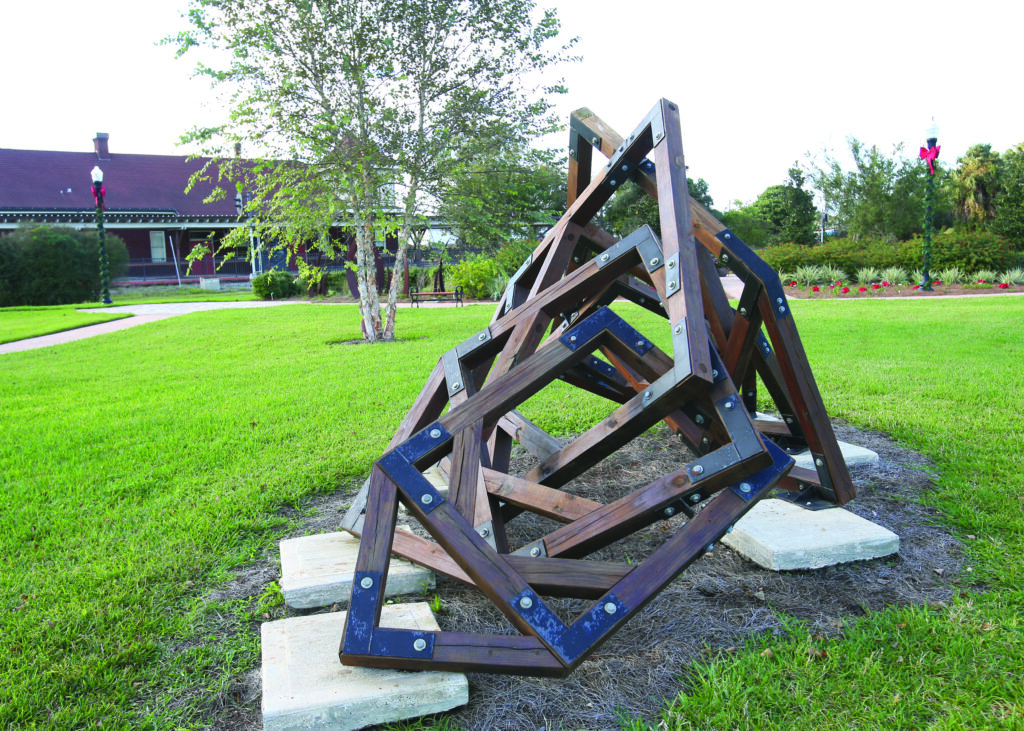
Reverieirever, a wood and steel statue by Sebastian Stoddart, is shown at the Tuscawilla Art Park [Bruce Ackerman/Ocala Gazette]
Similarly, with the Fort King heritage site, the other cultural arts asset mentioned in the implementation plan that is in partnership with the county, the city hopes to bring in private and public donors to help finish the extensive reconstruction and development planned for the site as well as a funding source to support operations.
Calero Wardell said the key to the success of the plan will be community support and involvement.
“OMAC and MCA have already conducted several workshops with community members and arts leaders, as well as soliciting feedback from all arts groups,” she noted. “As the plan moves forward, we will continue to hold community workshops and reach out to key stakeholders that are identified in the plan.”
Since OMAC is subject to Sunshine Law, community members can look to participate in the discussion by attending publicly noticed meetings.
Featured Local Savings
Support community journalism
The first goal of the Ocala Gazette is to deliver trustworthy local journalism so corruption, misinformation and abuse are not hidden from the public or unchallenged.




